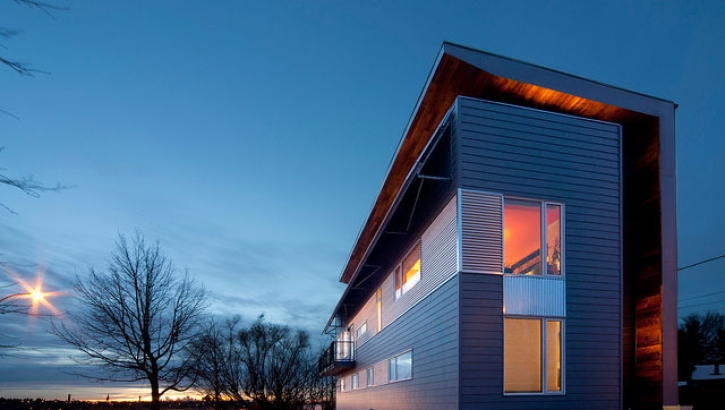VANCOUVER — New research demonstrates that ultra energy-efficient, “net-zero” buildings are within British Columbia’s reach if stronger policies that encourage energy conservation and renewable energy are put into place.
The two reports—researched by the Pembina Institute and commissioned by the University of Victoria-led Pacific Institute for Climate Solutions (PICS)—examine B.C.’s history of energy-efficient building regulations, and spell out what efforts are needed to meet its energy-efficiency ambitions.
B.C., along with the other members of the Pacific Coast Collaborative—Washington, Oregon and California—has committed to “lead the way to net-zero buildings.” Net-zero buildings are ultra energy-efficient and produce at least as much energy as they consume, ideally from renewable sources.
Tools that would support net-zero buildings include:
- stricter energy efficiency requirements in the building code
- better administration of, and compliance with, the building code
- incentives and financing solutions to offset costs and motivate developers
- options for municipalities to voluntarily adopt stricter energy efficiency requirements for buildings
- leading by example with super energy-efficient public-sector buildings
- increasing the rate of the carbon tax to reflect real costs of carbon pollution
- training to impart knowledge and skills required to design, build and operate net-zero buildings
- benchmarking energy use in buildings
- strategies to reduce energy required for heating, cooling, lighting and appliances.
The province has taken some initial steps toward net-zero, for example, by introducing an energy-efficient building strategy in 2008 and a new energy-efficiency requirement in the most recent revision of its building code. However, with no hard target dates set, no plan of how to get there and no official reporting on progress, B.C.’s current efforts will not result in net-zero buildings until 2050 or later.
B.C. is currently creating an updated Climate Leadership Plan, and achieving net-zero buildings must be a key component of that plan if the province intends to meet its legislated climate targets.
Quotes
From Josha MacNab, B.C. Director, Pembina Institute:
“The buildings where we live, work and play have significant energy and carbon footprints. If the province takes firm and ambitious action toward greater energy efficiency, we can meet the needs of an increasing population in British Columbia and use much less energy, while growing the economy and creating jobs.”
“If energy requirements for B.C. buildings continue at current pace, we will not see net-zero buildings before 2050. This would put us at least 20 years behind schedule if we expect to be able to tackle climate change in a meaningful way.”
“The B.C. government has committed itself to leading the way on net-zero buildings. With revisions currently underway for the province’s Climate Leadership Plan, the Province has an important opportunity to pick up the pace with energy efficiency and demonstrate leadership on climate change.”
From Tom Pedersen, Executive Director, Pacific Institute for Climate Solutions:
“Buildings are major energy users and contributors to climate change. With building floor space expected to double globally by 2050, it is essential that the energy intensity required to run these buildings falls rapidly.”
“The practical measures outlined in these two papers provide a policy pathway for achieving significant reductions in carbon pollution from new buildings, while also leveraging major energy savings and job creation for British Columbians.”
To read the reports—Evolution of Energy Efficiency Requirements in the B.C. Building Code and The Path to “Net-Zero Energy” Buildings in B.C.—visit the Pembina Institute or PICS websites.
Quick facts
- Buildings account for 29 per cent of energy use and 12 per cent of greenhouse gases in B.C.
- Globally, total building floor space is expected to double between now and 2050.
- In B.C. total floor area of residential and commercial buildings is expected to increase 58 per cent between 2007 and 2050.
- Nationwide, implementing cost-effective energy-efficiency measures in the residential, commercial and industrial sectors could generate an estimated $19 to $48 billion in GDP and 121,000 to 304,000 new jobs.
[30]
Media contacts:
Kevin Sauve
Communications Lead, Pembina Institute
kevins@pembina.org
604-354-2628
Robyn Meyer
Senior Communications Officer, PICS
rmeyer@uvic.ca
250-588-4053




